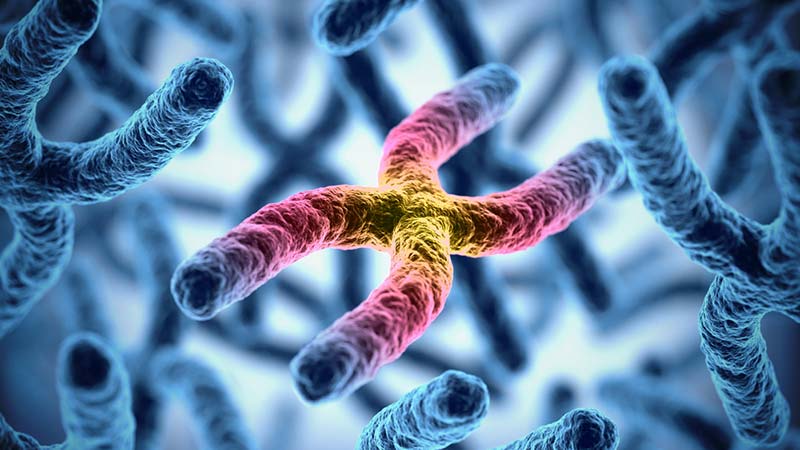
It’s a question of nature and nurture.
The ability of scientists to break the genetic code has provided an illusion that we now understand biology. We don’t. While today we have more knowledge than ever about health and fitness, we may never fully understand the complexity of these concepts.
We do, however, know a lot about how lifestyle plays a key role in quality of life. Yet, lurking deep in our bodies are genes that can disrupt it all. Whether this is just part of the natural selection process we also may never know.
The answer to the question of whether bad genes can negate a healthy lifestyle is yes. It’s the potential our bodies possess. While most people in the Western world today will die from preventable chronic diseases, much smaller numbers, about 5 percent, will succumb from similar conditions as dictated by genetics, such as cancer, seemingly immune to all the help a healthy environment or lifestyle can lend.
Certainly, a family history of certain conditions can increase one’s risk of those diseases. However, much of this may have to do with common environmental or lifestyle factors we shared with our parents and that are completely out of our control.
More importantly, improving lifestyle can overcome poor health as indicated by significant reductions in disease risk. But there are two sides to this genetic influence.
Big Bad Genes
We inherit genes from our parents, who inherited them from their parents, and so on. Like genes for eye and hair color, those responsible for disease — our inherited risk — arrive in us this way too, with the damage often showing up in past generations, sometimes extensively, although sometimes silent. In addition, genetic damage can occur through environmental stressors, mutations that may be more common in recent generations or during our own life, that are associated with breast, stomach, prostate and other cancers, for example.
In other words, these unhealthy environmental and lifestyle factors may have affected genes that were passed on to us, or our own genes directly within our lifetimes.
We can control most of our genetic influences significantly through environmental interactions. It’s the notion of nature and nurture — the never-ending story of striving to be better through better eating, exercise, stress regulation and other controllable, modifiable lifestyle factors. But what happens when bad genes beat the best of the best lifestyles?
We now know they exist, genes programmed with the real potential to drive our bodies into a quick, rapid death from cancer and other fatal conditions, often despite a healthy lifestyle and low disease risk. We don’t know when the condition will strike, if it does at all, or even if the possibility is there. Many conditions become evident earlier in life, with some waiting years. With today’s genetic testing, we are more privy to this potential. Examples of these known devastating genes that are rare but real include breast (BRCA), gastric and prostate cancers, those found elsewhere in the body, and some seen in childhood.
Environmental Toxins
Growing up in the years when companies created products that we later discovered to be toxic has very possibly caused changes within our genes. These include bright blue and pink food colors and tasty fake flavors, pesticides and herbicides, air-born chemicals from toys, tobacco smoke, mold and other side effects of cheap building materials, to mention just a few. There is no doubt that too many of these toxins can negatively impact those genes that cause disease. Warning or banning the use of these environmental hazards only occurred after the fact, in most cases. So large numbers of people were exposed to drugs, bad foods and other toxic chemicals. In some cases, we now know the impact, although more often the information quietly disappeared.
Today, air pollution is classified as a class 1 human carcinogen by the World Health Organization. Common cancer locations include not only lung, but those of the head and neck, breast, digestive tract, bladder and others. Moreover, air pollution can cause genetic mutations, which can be passed to offspring, who may, even if they avoid air pollution may still be affected by it.
Another common environmental toxin that affects our genes is synthetic folic acid, which can impact the development of most cancers. Through many years of exposure to this chemical, both as a dietary supplement and in food fortification, genetic changes have occurred in 30 percent or more of the population, a number that could easily reach 40 percent. The ensuing unmetabolized folic acid (UFA) in our blood and the associated folate deficiency caused by ingesting this chemical may significantly increase the risk of almost any cancer later in life.
Other environmental stressors that affect our genes continue to be questioned, especially electromagnetic fields (EMFs) from cell phones and other sources. There’s no argument that this form of radiation can be harmful, just how much is the question scientists are trying to answer.
Bottom line is that, except for trauma and infections, about 95 percent of people in the West die of preventable diseases and about 5 percent from genetic diseases not influenced by lifestyle that appear similar, with cancer as a common example.








